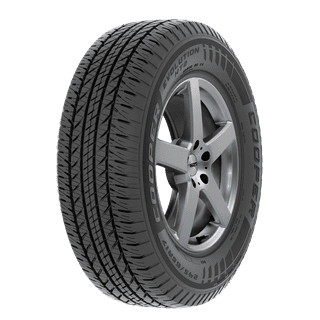Tire Solution: The Effect of Climate Condition
When it pertains to ensuring optimum performance and security on the roadway, comprehending the influence of climate condition on tire solution is important. From scorching warmth to icy roads, each weather condition component can considerably affect tire capability and overall driving experience. By delving into the impacts of differing climate condition on tires, motorists can obtain valuable insights that may improve their lorry's efficiency and longevity. In this discussion, we will check out the detailed relationship between weather and tire service, clarifying the value of weather-specific tire upkeep practices and considerations.
Heat and Tire Performance
When revealed to heats, tires experience adjustments in efficiency that can substantially affect automobile security and handling. The heat generated from long term driving or hot weather conditions triggers the tire rubber to soften, leading to lowered step life and boosted wear. As the rubber ends up being softer, the tire's grip when traveling lessens, influencing stopping distances and total grip. In extreme instances, extreme warmth can also cause tire blowouts, posing an extreme security risk to the lorry and its passengers.
Furthermore, high temperature levels can accelerate the process of tire aging, triggering the rubber to wear away more rapidly. To alleviate the results of heat on tire performance, chauffeurs must regularly check their tire pressure, turn tires to make sure also put on, and evaluate for any kind of signs of damage.
Cold Weather Impacts
Cold weather condition conditions can have a significant influence on tire efficiency and security. In cold weather, tires might likewise lose air stress a lot more quickly, which can affect taking care of and gas effectiveness.
To mitigate the results of chilly weather on tires, it is crucial to regularly examine tire pressure and inflate them to the producer's recommended levels. Using winter or all-season tires developed for winter problems can likewise enhance traction and hold on icy or snowy roads - discount tires morris il. Appropriate tire maintenance, consisting of regular assessments for wear and damages, ends up being much more crucial throughout colder months to make certain optimal efficiency and safety
Rainy Issues Influence
Throughout wet conditions, tire performance and security can be considerably influenced by the wet road surfaces and reduced presence. The step pattern of tires plays a crucial duty in keeping grip on wet roads. Tires with worn-out footsteps are extra susceptible to hydroplaning, where a layer of water develops between the roadway and the tire surface area, causing loss of traction. To combat this, chauffeurs must consistently inspect their tires for sufficient tread depth and take into consideration purchasing tires especially created for wet conditions.

Snow and Tire Safety And Security
Snow-covered roads present unique difficulties for drivers, highlighting the relevance of proper tire choice and maintenance. When driving in snowy conditions, having the appropriate tires can make a significant distinction in safety and security and performance. Winter season tires are made with special rubber compounds and walk patterns to provide much better grip on snow and ice contrasted to all-season tires. The deeper treads and sipes of wintertime tires aid grip the road better, minimizing the threat of moving and sliding.
Along with using winter season tires, it is vital to guarantee they are effectively pumped up. Winter can cause tire pressure to drop, influencing grip and handling (tires morris il). Regularly checking and maintaining the correct tire pressure is essential for optimal performance in snowy problems

Weather-Related Tire Upkeep
When confronted with numerous climate condition, proper tire maintenance comes to be an important facet of vehicle safety and security and efficiency. Weather-related tire maintenance encompasses a variety of techniques aimed at making certain optimal tire function and long life in different weather situations. One vital aspect of weather-related tire maintenance is tire stress law. Varying temperature levels can create tire pressure to vary, affecting grip and gas efficiency. On a regular basis checking and adjusting tire stress according to supplier recommendations is important for risk-free driving in altering weather. In addition, tire tread depth plays a significant role in managing various climate components. Tires with ample step deepness provide better grip on wet or icy roads, reducing the risk of skidding or hydroplaning. Inspecting tire tread routinely and replacing tires when tread wear reaches a certain deepness is essential for keeping grip and security in unfavorable weather condition. By prioritizing weather-related tire maintenance, drivers can boost security, enhance car performance, and lengthen the life expectancy of their tires.
Conclusion
To conclude, weather have a considerable effect on tire efficiency and safety. site here From warmth affecting tire stress and wear to cool weather lowering traction, it is necessary to think about the climate when maintaining and making use of tires. Rainy problems can lower grip and bring about hydroplaning, while snow can enhance the danger of accidents if tires are not appropriately outfitted. Weather-related tire maintenance is vital in ensuring ideal efficiency and safety when driving.
In this conversation, we will explore the elaborate connection in between climate problems and tire solution, losing light on the relevance of weather-specific tire maintenance practices and considerations.
